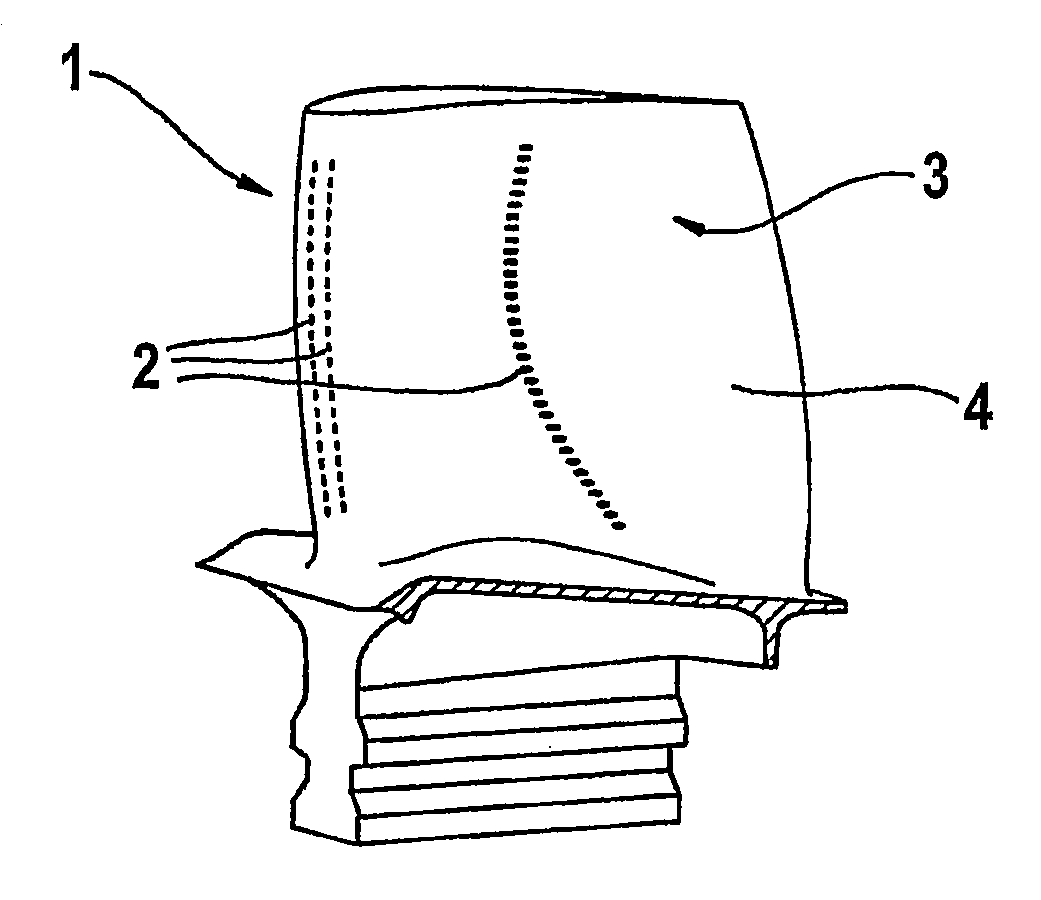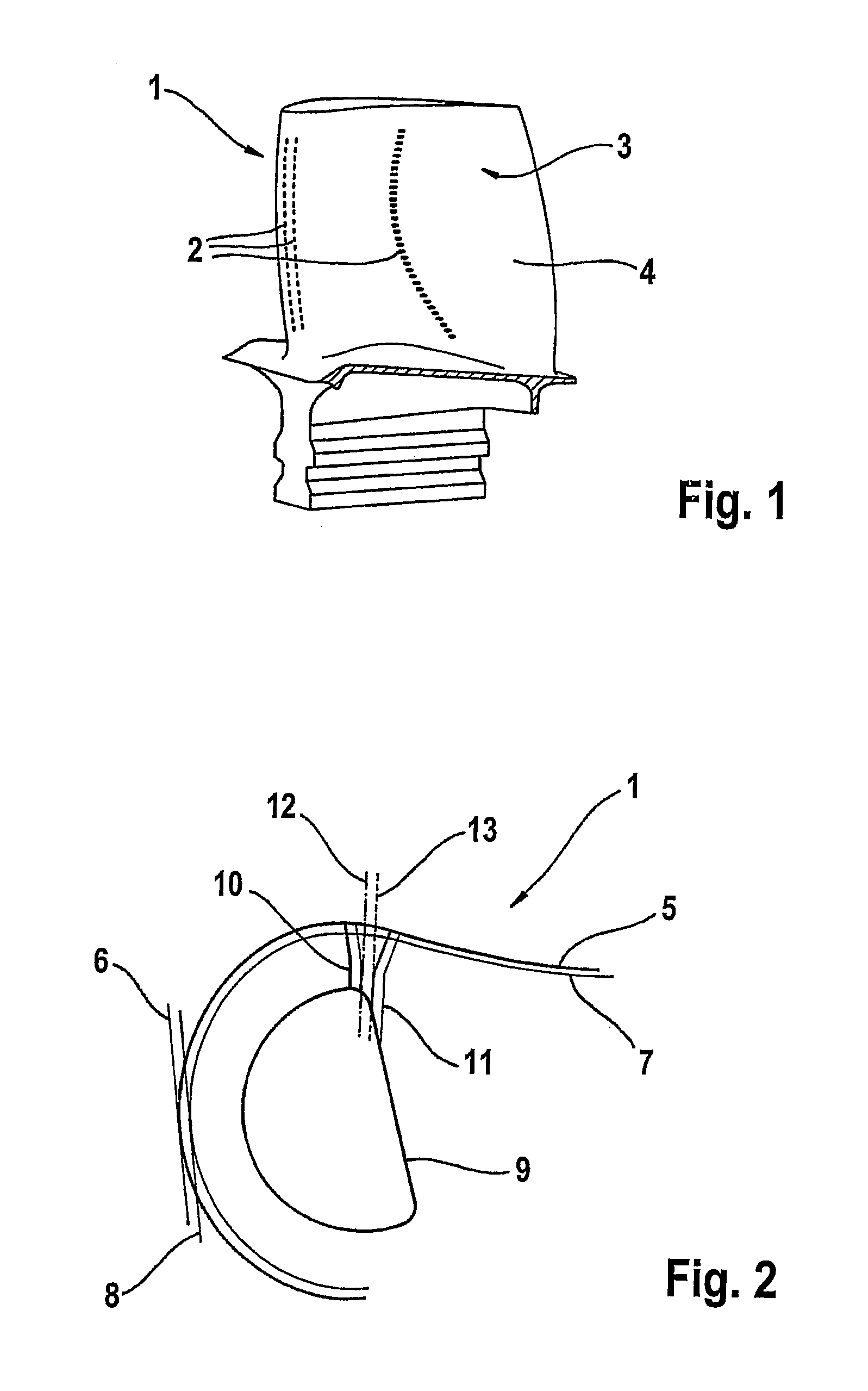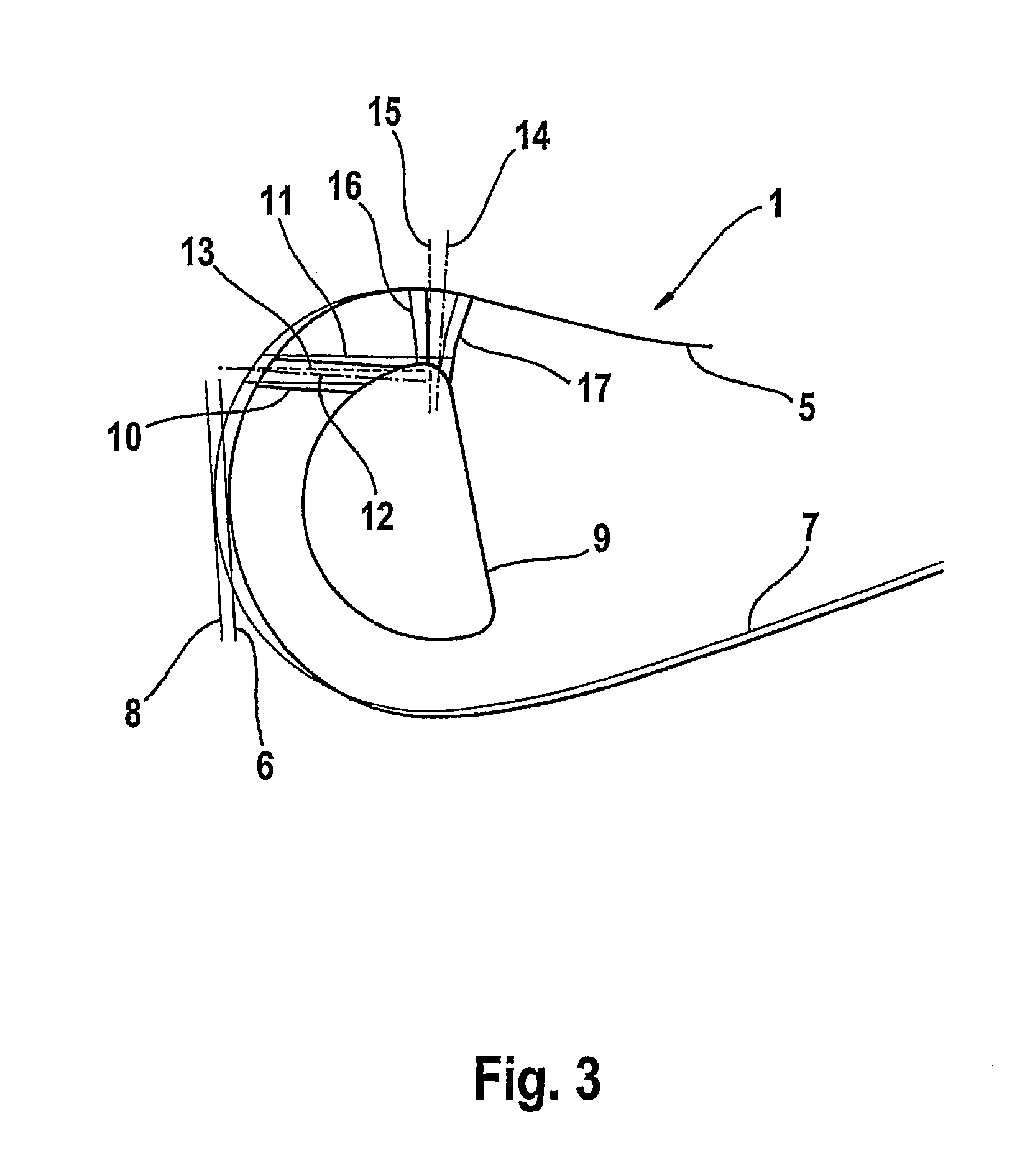Process for producing holes
a technology for producing components and holes, applied in the direction of computer control, program control, instruments, etc., can solve the problems of inability to produce such cool air holes, inability to process stable production, and inability to overheat components, so as to avoid the possibility of merged holes caused by component tolerances, improve the service life of components, and improve the quality of holes
- Summary
- Abstract
- Description
- Claims
- Application Information
AI Technical Summary
Benefits of technology
Problems solved by technology
Method used
Image
Examples
Embodiment Construction
[0015]According to the presently described technology, a process for producing holes in a component, in particular of turbo engines, where each hole extends from a first surface at the exterior of the component to a second surface at the interior of the component, comprises the following steps:[0016]developing a 3-D model of the geometry of the component, at least for the area of the holes;[0017]adapting each hole on the basis of, the actual geometry of the component; and / or[0018]generating a production program for each individual hole.
[0019]The production of cool air holes requires that the outer and inner geometries (cavities in the turbine blade) of the individual part are known. This is provided via a 3-D model of the individual component. A 3-D model can be a surface model or a volume model. A 3-D model can be developed via computer tomography (CT) but other processes are also conceivable. If the precision of the CT for the outer geometry is inadequate, then it is generated via...
PUM
| Property | Measurement | Unit |
|---|---|---|
| acute angle | aaaaa | aaaaa |
| acute angle | aaaaa | aaaaa |
| area | aaaaa | aaaaa |
Abstract
Description
Claims
Application Information
 Login to View More
Login to View More - R&D
- Intellectual Property
- Life Sciences
- Materials
- Tech Scout
- Unparalleled Data Quality
- Higher Quality Content
- 60% Fewer Hallucinations
Browse by: Latest US Patents, China's latest patents, Technical Efficacy Thesaurus, Application Domain, Technology Topic, Popular Technical Reports.
© 2025 PatSnap. All rights reserved.Legal|Privacy policy|Modern Slavery Act Transparency Statement|Sitemap|About US| Contact US: help@patsnap.com



